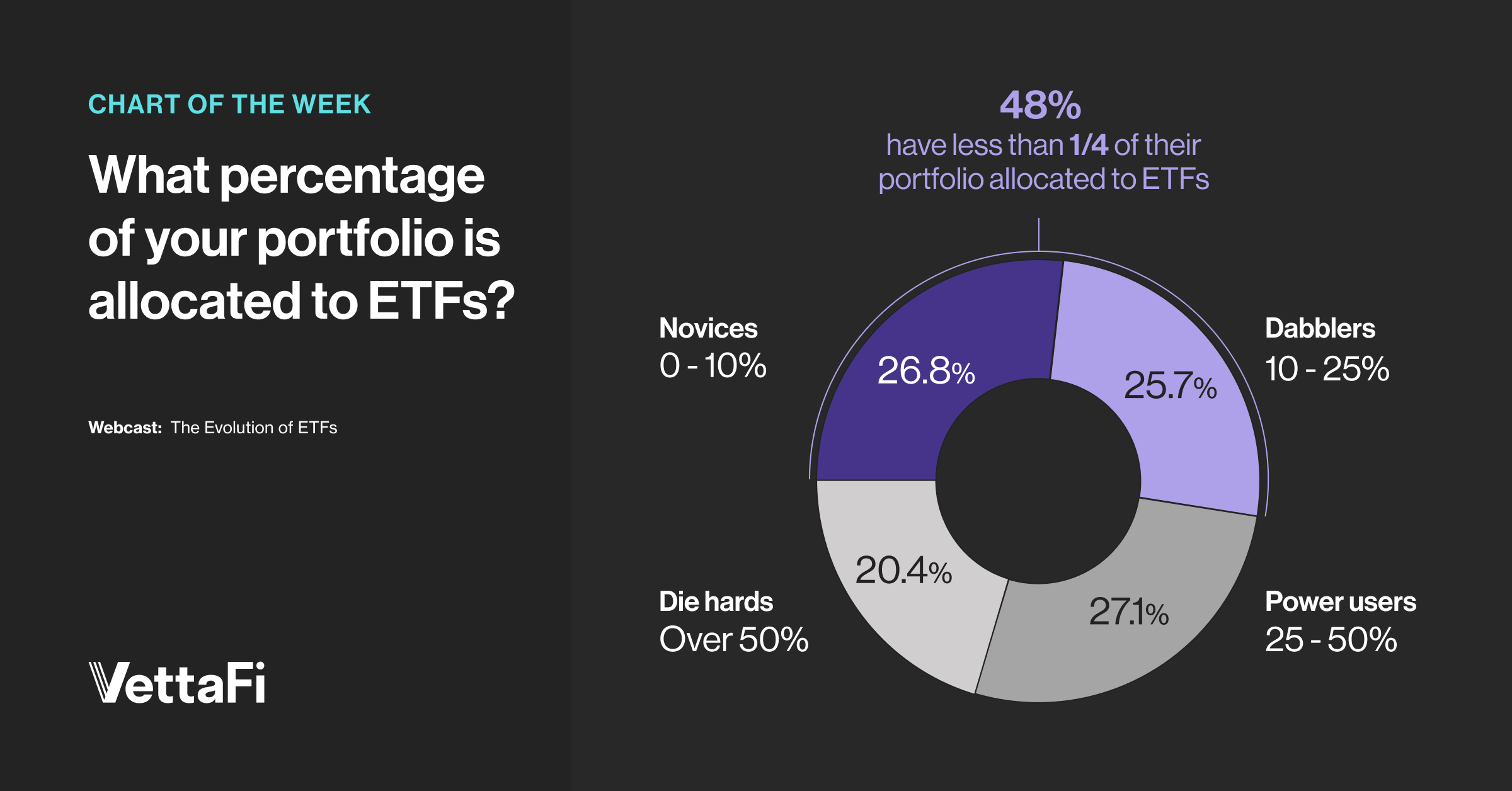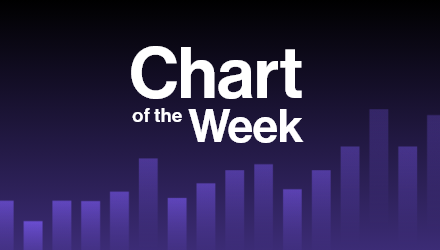Though a year ago our name changed to VettaFi, ETFs are still at the core of what we do. We run two widely viewed websites — ETF Trends and ETF Database — and billions of dollars are invested in ETFs tied to VettaFi-run indexes. Yet, every once in a while, we are reminded that many advisors we support invest in more than ETFs for their clients.
During a June webcast with Dimensional Funds focused on ETFs, we simply asked advisors: “What percentage of your portfolio is allocated to ETFs?” Only 20% of respondents were ETF die-hards with more than half of assets invested in ETFs. Meanwhile, 48% had less than a quarter of assets allocated to ETFs. This was a reality check for me.
Many Advisors Are ETF Dabblers or Novices

Advisors are pairing ETFs with other investments, likely individual stocks or bonds and mutual funds that invest in such securities. My hope is that they understand their true exposure.
To help showcase the importance of looking under the hood of a portfolio, we decided to tap into the portfolio analytics tools of VettaFi’s LOGICLY. We loaded in a hypothetical portfolio listed below that had only one ETF. A 20% stake in the iShares Core S&P 500 ETF (IVV) served as a building block. The portfolio also held three mutual funds: a 25% stake in PIMCO Total Return, a 20% position in American Funds Growth Fund of America, and a 10% allocation to Vanguard Dividend Appreciation Fund. In addition, the portfolio owned three individual stocks: Microsoft, Procter & Gamble, and UnitedHealth Group.
Model Portfolio Pairing ETFs With Other Investments

The combination of stocks and stock-based ETFs shifts the exposure in a way that an advisor needs to communicate to a client. Microsoft’s weighting is not 10%, but 13%, due to its allocation in the ETFs and mutual funds. Meanwhile, United Healthcare and Procter & Gamble are 11.1% and 5.5%, respectively, not the 10% and 5.0% the client might have anticipated. Tesla and Apple represent the next-largest equity holdings.
What’s Really Inside the Portfolio Is Notable

Astute readers probably realized that this theoretical portfolio owned mutual funds that are either peers or identical to existing ETFs from the same fund family. The Vanguard Dividend Appreciation ETF (VIG) charges a miniscule 0.06% expense ratio. This is two basis points less than the admiral share class of the Vanguard Dividend Appreciation mutual fund while owning the exact same securities. VIG also offers greater liquidity for advisors making allocation changes.
Meanwhile, the Capital Group Growth ETF (CGGR) and the PIMCO Active Bond ETF (BOND) are ETF peers of the American Funds Growth Fund of America and the PIMCO Total Return mutual funds. The growth equity and core plus bond ETFs are managed by different people at the same parent asset management companies.
Unlike VIG, CGGR and BOND are not ETF share classes of the owned mutual fund. However, with expense ratios of 0.39% and 0.56%, respectively, CGGR and BOND can make strong actively managed allocations for advisors as they gain comfort with ETFs. If the hypothetical portfolio shifted to BOND, CGGR, and VIG, the advisor’s allocation to ETFs would rise to 75% from 20%. Such moves would convert the advisor from an ETF dabbler to an ETF die-hard.
Many firms, VettaFi included, expect advisors to continue to expand their ETF allocations over the next few years. For the shift to accelerate, advisors’ understanding of the growing suite of products and how they can fit into client portfolios will need to increase.
For more news, information, and analysis, visit the Financial Literacy Channel.

